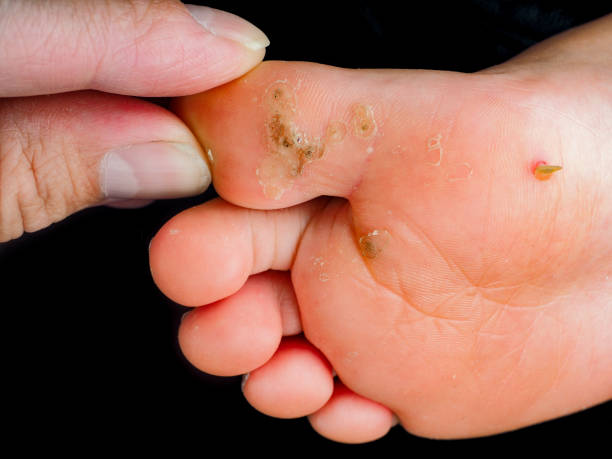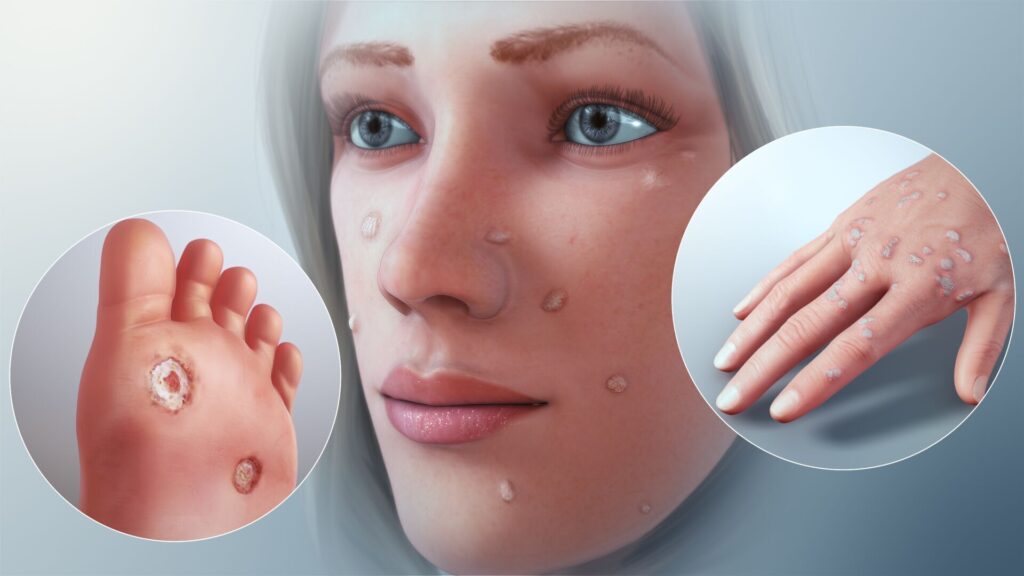WHAT ARE WARTS?
Warts are small, grainy skin growths that happen most usually on your fingers or hands. Rough to the touch, common warts also usually feature a pattern of small black dots, which are tiny, clotted blood vessels.
Warts are caused by a virus and are spread by touch. It could take a wart as long as 2 to 6 months to develop after your skin has been exposed to the virus. Warts are generally harmless and ultimately disappear on their own. But many people choose to remove them because they find them worrisome or embarrassing.
WARTS SYMPTOMS
Warts generally happen on your fingers or hands and might be:
- Small, fleshy, grainy bumps
- Flesh-colored, white, pink, or tan
- Rough to the touch
- Sprinkled with black pinpoints, which are tiny, coagulated blood vessels
WHEN SHOULD YOU SEE A DOCTOR?
See your doctor or primary care physician for warts if:
- The growths are painful or a change of appearance or color
- You have tried treating warts, but they continue, spread, or recur
- The growths are worrisome and meddle with activities
- You are unsure whether the growths are warts
- You are an adult and numerous warts start to appear, which might indicate the immune system is malfunctioning
WARTS CAUSES
Warts are caused by the human papillomavirus (HPV). The virus is quite common and has more than 150 forms, but only a few cause warts on your hands. Some strains of human papillomavirus (HPV) are acquired through sexual contact. Most types, although, are spread by casual skin contact or through shared objects, like towels or washcloths. The virus generally spreads through breaks in your skin, like a hangnail or a scrape. Biting your nails also could cause warts to spread on your fingertips and around your nails.
Each person’s immune system responds to the human papillomavirus (HPV) virus differently, so not everyone who comes in contact with human papillomavirus (HPV) develops warts.
WARTS RISK FACTORS :-
People at greater risk of developing warts include:
- Children and young adults, because their bodies might not have built up immunity to the virus
- People with weakened immune systems, like those with HIV/AIDS or people who have had organ transplants
WARTS PREVENTION
To lower your risk of warts:
- Circumvent direct contact with warts. This includes your own warts.
- Do not pick at warts. Picking might spread the virus.
- Do not use the same emery board, pumice stone, or nail clipper on your warts as you use on your healthy skin and nails. Use a dispensable emery board.
- Do not bite your fingernails. Warts happen more usually in the skin that has been broken. Picking the skin around your fingernails opens the door for the virus.
- Do your grooming carefully. And avoid brushing, clipping, or shaving regions that have warts. If you are going to shave, use an electric razor.

WARTS DIAGNOSIS :-
In most cases, your doctor or primary care physician could diagnose a wart with one or more of these techniques:
- Analyzing the wart
- Scraping off the top layer of the wart to check for signs of dark, pinpoint dots coagulated blood vessels which are common with warts
- Removing a tiny section of the wart (shave biopsy) and sending it to a lab for examination to rule out other types of skin growths
WARTS TREATMENT
Most warts go away without treatment, though it might take a year or two and new ones might develop nearby. Some people choose to have their warts treated by a doctor or primary care physician because home treatment is not working and the warts are worrisome, spreading, or a cosmetic concern.
The aims of treatment are to destroy the wart, stimulate an immune system response to fight the virus or both. Treatment might take weeks or months. Even with treatment, warts tend to return or spread. Doctors or primary care physicians generally begin with the least painful methods, particularly when treating young children.
Your doctor or primary care physician might recommend one of the following approaches, based on the location of your warts, your symptoms, and your preferences. These methods are sometimes used in combination with home treatments, for example, salicylic acid.

Stronger peeling medicine (salicylic acid) – Prescription-strength wart medicines with salicylic acid work by eliminating layers of a wart a little at a time. Studies show that salicylic acid is more useful when combined with freezing.
Freezing (cryotherapy) – Freezing therapy done at a doctor’s or primary care physician’s office involves applying liquid nitrogen to your wart. Freezing works by causing a blister to form beneath and around the wart. Then, the dead tissue diminishes within a week or so. This method might also stimulate your immune system to fight viral warts. You will likely require repeat treatments.
Side effects of cryotherapy include pain, blistering and dis-colored skin in the treated region. Because this technique could be painful, it is generally not used to treat the warts of young children.
Other acids – If salicylic acid or freezing is not working, your doctor or primary care physician might try trichloroacetic acid. With this method, the doctor or primary care physician first shaves the surface of the wart and then applies the acid with a wooden toothpick. It needs repeat treatments every week or so. Side effects are burning and stinging.
Minor surgery – Your doctor or primary care physician could cut away the worrisome tissue. It might leave a scar in the treated region.
Laser treatment – Pulsed-dye laser treatment burns (cauterizes) small blood vessels. The infected tissue ends up dying, and the wart falls or detaches. The evidence for the effectiveness of this method is limited, and it could cause pain and scarring.
If you or anyone you know is suffering from common warts, our expert providers at Specialty Care Clinics will take care of your health and help you recover.
Call 469-545-9983 to book a telehealth appointment for an at-home check-up.
